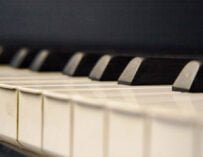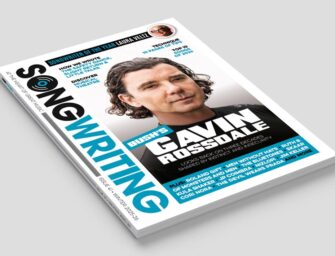
James Linderman on piano-based songwriting: “Treat the materials in a key like a palette of paints.”
If the piano is your primary songwriting instrument, here are some tips to help you get more out of it
Sometimes it seems like each elemental discipline in songwriting vies for supremacy. One songwriting expert will say the most important thing is that our songs have a patterned rhyme scheme or a strong lyrical premise, the next will insist that melody is king and that, without a strong tune, our song is dead in the water. Others still promise to transform us into ‘chord factories’ over the course of their $200 weekend workshop.
The truth is that they are all correct: songs are complex organisms and to excel, they need to be great all-round. Our songs will only be as strong as our most obvious weakness. So these 10 suggestions on how to improve as a piano player should also help you improve as a songwriter, by addressing some very common hidden weaknesses. They should also, hopefully, offer some interesting ways to find new weapons to write songs with.
Burt Bacharach once said, “The hands always move to the familiar.” By expanding our skills on our instrument, it stands to reason we will expand what is ‘familiar’, and hence the array of songwriting tools at our disposal. So here are my top 10 tips for the piano-playing songwriter…
Get help from James Linderman on the Songwriting Magazine Podcast

1. Don’t let the left hand know what the right hand is playing
A book like Louis Bellson’s Modern Reading Text In 4/4 can help us not have our hands follow one another around the piano in unison. A great drill is to take a single bar of rhythm from anywhere in the book and apply the left hand (perhaps playing an octave) to whatever is in the first half of the bar and then play the right hand (perhaps playing a triad) to whatever is in the back half of the bar. Repeat the pattern to suit. This will help develop rhythmic independence in the two hands, which in turn should create some new skills and even seed some fresh ideas for songs.
2. Getting to first bass
A song like The Beatles’ Lady Madonna has a great left-hand bassline that has not been paralleled by too many piano-playing songwriters in popular music since. The question is, are we going to let a bass guitar player out-write us on the piano in the left-hand riff realm? Well, bass riffs are his specialty, and he’s a pretty good piano player as well, so maybe he wins… for now.
To create an interesting bass riff of our own, we can turn to the Bellson book again. Take a random bar of rhythm and play notes from a scale to it, reordering them until you have a riff you like. Now test-drive each chord to the riff in the appropriate key, and collect the chords you liked best. Arrange the order of the chords to your liking and you will have a potential verse or chorus to a new song – and a new way of writing more songs.
3. Play for fun!
Remember when you used to sit for hours and just bang away on some chords on the piano and improvise some singing over them? When it seemed so incredible just to be playing music? Whether we last felt that way two days ago or 30 years ago, that’s the feeling we need to get back to. The buzz of just creating music because we’re built to do it, and for no other purpose than the pure love of it.
 4. The evil metronome
4. The evil metronome
Okay, so the metronome is not our best friend and it can be argued that most piano players have pretty good ‘time’ comparatively speaking anyway. It could, however, also be argued that our sense of time can never be over-developed and that a good song can become great if it sits nicely in the pocket. The metronome is the tool that can get us there the fastest and most reliably.
Try putting a metronome on 60 and instead of playing merely close to the ticking, try shifting concentration on hitting the ticks dead on. Set it up so that the piano is slightly louder than the metronome, and the metronome ticks should disappear when we have hit them square. I work on all of my songs like this, and I can actually hear them straighten out and become more musical and more likeable.
5. Something borrowed, something blues
Our artistic innovations become more valuable when they are born out of some tradition. For instance, if we put in our time learning every blues song we can get our hands on, we will be in a better position to see how to take the blues to the next level, for instance by coming up with a new fusion with some other style (the blues polka is still available, I believe).
Thanks to the internet, learning how to play all of, say, Billy Joel’s songs on the piano is easier now than ever before, and if we throw in some Stevie Wonder with some Keith Jarrett we would have a very nice traditional toolbox to write some very interesting new songs from.
6. Play nicely with others
Write with singers and other musicians of the non-piano variety. By writing with singers in every major genre and players of any earthly instrument, we get the broadest possible range of creative landscapes to write within. Some of this music might even challenge our definition of what our music sounds like – which is a great thing, because it destroys self-limitation and develops the kind of creative openness from which great art can spring.
7. Keys are the key!
Learning the raw materials (scales and primary chords) in every key will encourage us to write in some of the keys less travelled by, and in doing so inspire some new melodies and lyrics as well as some fresh technical ornaments in our accompaniment that just don’t happen in the keys of C, G or F. Treat the materials in a key like a palette of paints, explore some of the shades you’ve never used before and see what hits the canvas.
8. Extend yourself
Try using more extended harmonic options. Most piano players blend extensions like Sus 2, Sus 4, major and minor 6ths, and 7ths into their writing to help create greater harmonic colour and movement. Motion in songwriting creates emotion, and writing songs that make the listener feel something is one of our primary objectives. Harmonic extensions should, however, be added based on intentional calculation and thoughtful consideration rather than from muscle memory or a limitation of options. We should plan what we play and play what we plan.
 9. Practise, practise, practise
9. Practise, practise, practise
Rehearsing our songs after we’ve finished writing them sounds to some writers like the most obvious next step. For these writers, the work of making the song a performance really only starts when the ink on the page is dry. For other writers, those that always seem to have a new song idea waiting in the wings, rehearsing something finished seems like a waste of good writing time.
Personally, once songs are written I rehearse them over and over again in front of a mirror. Rehearsing the finished work allows the songs to survive their first three or four performances in front of an audience, and those performances provide a great opportunity to determine if a new work is engaging listeners. Rehearsing songs in front of a mirror also helped train me to look up at the audience while performing, and therefore helps me see my performance from the audience’s perspective.
10. Wham bam it’s time to jam
My good friend and very talented fellow musician Chris Bartos recently reminded me of the importance of getting out and playing with other musicians. It might be to perform live or record, it might be to write with someone, it might be just to jam. Regardless of the circumstances, our goal should be to just play wherever and whenever we can. I play my best when there is a childlike lack of ulterior motive. No focus on moving my career forward or making money: although both are important, they are not musical considerations. Success and money often follow enthusiasm around… but nothing cripples pure enthusiasm faster and more completely than the single-minded pursuit of fame and fortune.
I hope these tips prove helpful, and please feel free to contact me if you have any questions – or if you come up with a great piece of music that was helped along by one of these tips! I listen to every piece of music I get sent and I read and respond to every e-mail readers send.


 4. The evil metronome
4. The evil metronome 9. Practise, practise, practise
9. Practise, practise, practise






























Related Articles